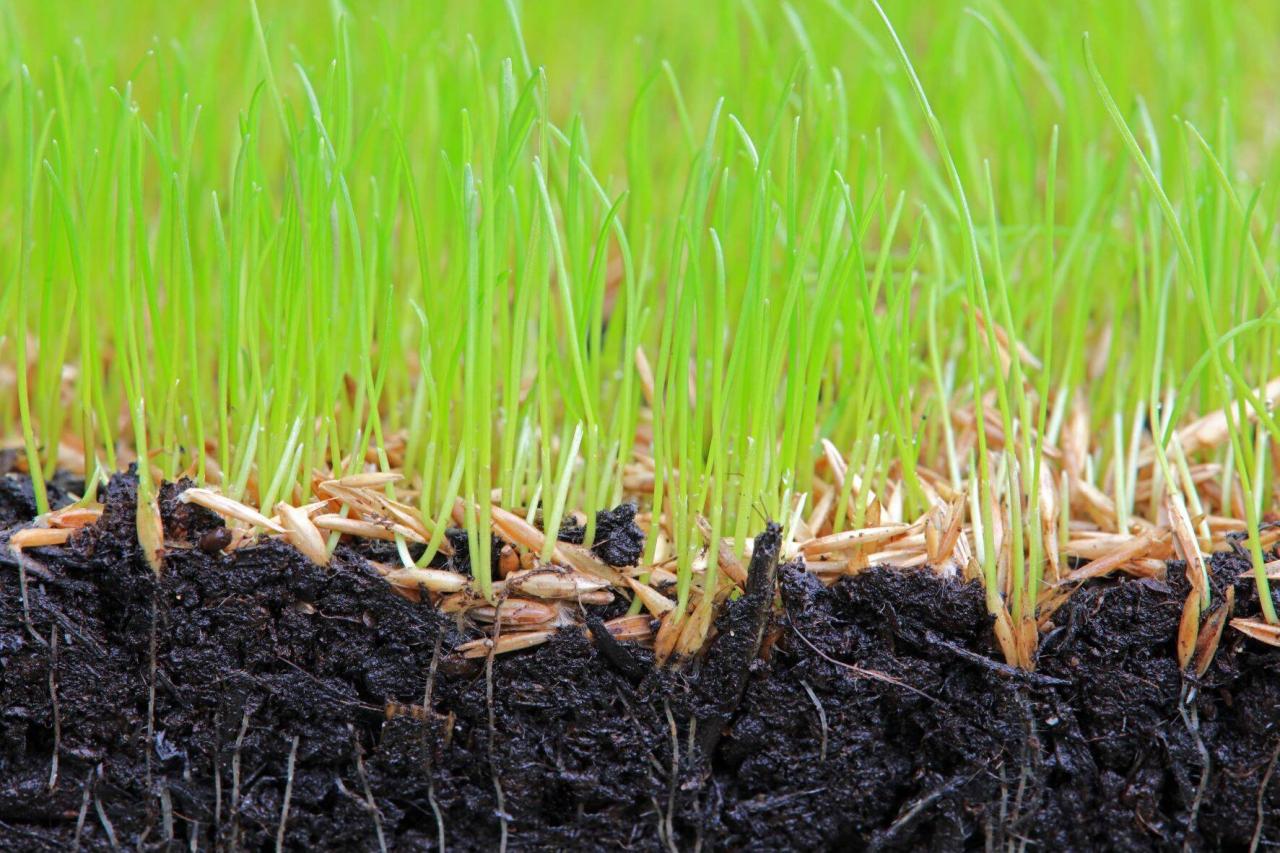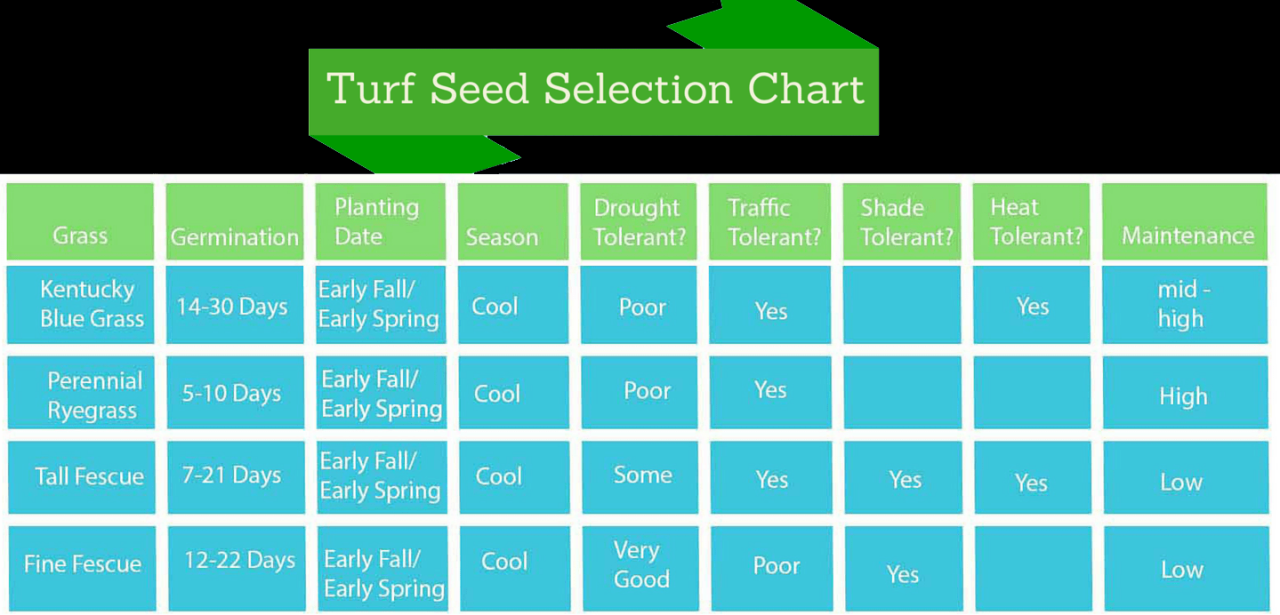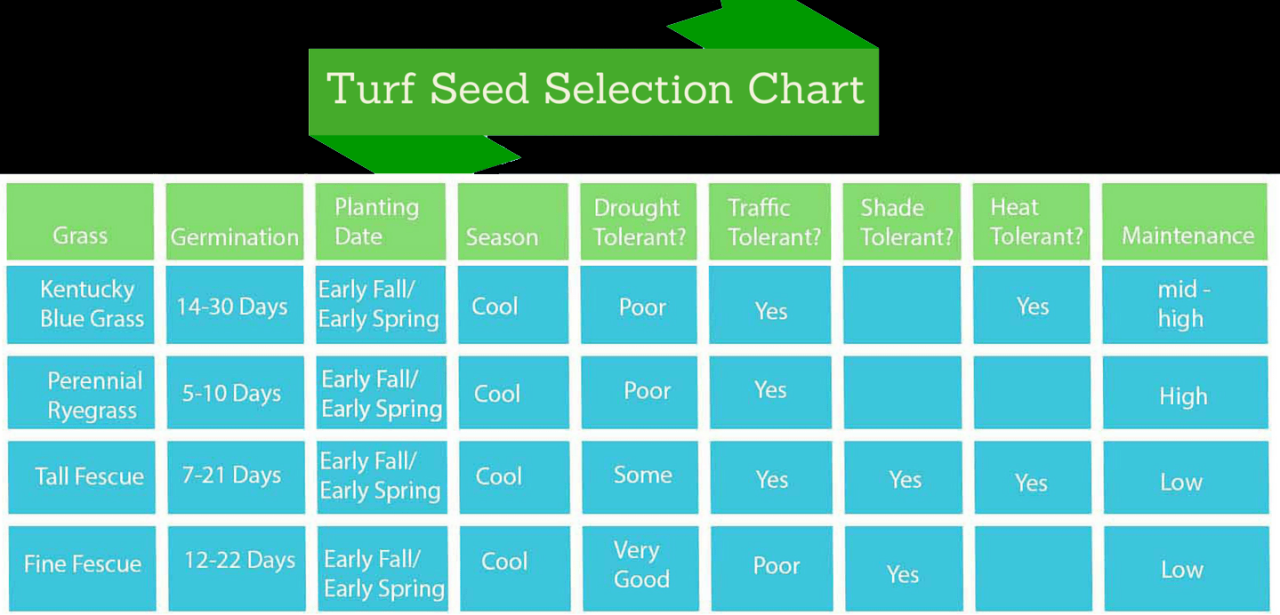How Long for Grass Seed to Germinate? Everything You Need – Ever wondered how long it takes for those tiny grass seeds to sprout into a lush green lawn? The answer, like most things in gardening, isn’t so simple.
A myriad of factors influence germination time, from soil temperature and moisture to the specific type of grass seed you choose. This comprehensive guide delves into the intricacies of grass seed germination, providing you with all the knowledge you need to achieve a thriving lawn.
Understanding the science behind germination is key to successfully establishing a new lawn or revitalizing an existing one. By grasping the influence of factors like soil temperature, moisture, light, and seed depth, you can create the ideal conditions for your grass seeds to sprout and thrive.
This guide also explores the typical germination time ranges for various common grass types, equipping you with the knowledge to anticipate the emergence of your new lawn.
Introduction
Knowing how long it takes for grass seed to germinate is crucial for successful lawn establishment. Understanding the germination process allows you to anticipate when you can expect to see new grass growth, plan for watering and maintenance, and troubleshoot potential problems.
Several factors influence the time it takes for grass seed to germinate, including:
Factors Affecting Germination Time
A range of factors can affect how long it takes for grass seed to germinate. Understanding these factors can help you create optimal conditions for successful lawn establishment.
- Grass Seed Type:Different grass species have varying germination times. For example, Kentucky bluegrass typically takes 10-21 days to germinate, while perennial ryegrass germinates faster, in 7-14 days.
- Soil Temperature:Grass seed needs a specific temperature range to germinate. Most cool-season grasses germinate best in temperatures between 60-75°F (15-24°C). Warm-season grasses prefer warmer temperatures, typically between 70-85°F (21-29°C).
- Soil Moisture:Consistent moisture is essential for germination. The soil should be moist but not waterlogged. Regular watering is crucial, especially during the initial germination phase.
- Soil Depth:Grass seed needs to be planted at the correct depth for optimal germination. Most grass seeds should be sown about ¼ inch deep. Planting too deep can hinder germination, while planting too shallow can lead to drying out.
- Light:Some grass seeds require light for germination, while others prefer darkness. It’s best to check the seed packet for specific instructions.
- Soil pH:The acidity or alkalinity of the soil can impact germination. Most grasses prefer a soil pH between 6.0-7.0.
- Seed Quality:The age and quality of the seed can affect germination rates. Fresh, high-quality seed will generally germinate faster and more successfully.
Factors Affecting Germination Time

Several factors can influence how long it takes for grass seed to germinate, impacting the success of your lawn establishment. Understanding these factors can help you optimize your planting process and ensure a healthy, thriving lawn.
Soil Temperature
Soil temperature plays a crucial role in grass seed germination. Most grass varieties have an ideal temperature range for germination. For example, cool-season grasses like Kentucky bluegrass and perennial ryegrass germinate best in temperatures between 60°F and 75°F (15°C and 24°C).
Warm-season grasses, such as Bermuda grass and zoysia grass, prefer temperatures between 75°F and 90°F (24°C and 32°C). If the soil temperature is too low, germination will be slow or may not occur at all. Conversely, if the soil temperature is too high, the seeds may be damaged or killed.
Soil Moisture
Maintaining adequate soil moisture is critical for successful seed germination. Seeds need moisture to absorb water and begin the germination process. However, too much moisture can suffocate the seeds and prevent them from sprouting. It’s important to keep the soil consistently moist, but not waterlogged, during the germination period.
Light
While some grass seeds need light to germinate, others are best kept in the dark. For example, cool-season grasses typically require light for germination, while warm-season grasses generally prefer darkness. The seed packet will usually indicate whether the grass seed requires light or darkness for germination.
Seed Depth
The depth at which you plant your grass seed can significantly impact germination. Planting seeds too deep can make it difficult for them to reach the surface and germinate. Planting seeds too shallow can expose them to drying out and can hinder proper root development.
The ideal planting depth for most grass seeds is about 1/4 inch (0.6 cm).
Soil Type
Different soil types have varying drainage and moisture retention properties, which can affect germination time. For instance, sandy soils tend to drain quickly, making it harder to maintain consistent moisture for germination. Clay soils, on the other hand, can retain too much moisture, potentially leading to seed rot.
Choosing the right grass variety for your soil type can improve germination success.
Grass Seed Variety
The type of grass seed you choose can also influence germination time. Different grass varieties have different germination rates and optimal growing conditions. For example, Kentucky bluegrass generally takes longer to germinate than perennial ryegrass. When selecting grass seed, consider the specific characteristics of each variety and its suitability for your climate and soil type.
Just like patience is key when nurturing a new lawn, the art of Bonsai demands a similar dedication to careful observation and consistent care. Understanding the ideal conditions for grass seed germination, from temperature to moisture, will help you achieve a lush and vibrant lawn.
Similarly, bonsai trees thrive under specific environmental factors, requiring a keen eye for detail and a commitment to their well-being.
Typical Germination Time Ranges

The germination time of grass seed can vary depending on several factors, including grass type, soil temperature, moisture levels, and seed quality. Generally, most grasses will germinate within a few weeks, but some may take longer.
Germination Time Ranges for Common Grass Types
The following table provides typical germination time ranges for common grass types:
Grass Type |
Minimum Germination Time (Days) |
Average Germination Time (Days) |
Maximum Germination Time (Days) |
|---|---|---|---|
Kentucky Bluegrass |
7 |
14 |
21 |
Perennial Ryegrass |
5 |
10 |
14 |
Fine Fescue |
10 |
14 |
21 |
Tall Fescue |
7 |
14 |
21 |
Zoysia Grass |
14 |
21 |
30 |
Bermuda Grass |
10 |
14 |
21 |
St. Augustine Grass |
14 |
21 |
30 |
Tips for Successful Germination
Successfully germinating grass seed depends on creating the right environment for the seeds to thrive. A combination of proper soil preparation, optimal seeding depth and spacing, consistent watering, and protection from pests and diseases will increase the chances of a healthy, lush lawn.
Preparing the Soil
Before sowing grass seed, it’s crucial to prepare the soil to provide a suitable environment for germination. This involves removing existing vegetation, loosening the soil, and amending it with nutrients.
- Remove Existing Vegetation:Clear the area of any existing grass, weeds, or other vegetation. This can be done manually or with a lawnmower. Removing existing vegetation helps prevent competition for nutrients and space.
- Loosen the Soil:Loosen the soil to a depth of 4-6 inches. This allows the roots to penetrate the soil easily. You can use a garden fork, tiller, or rake to loosen the soil.
- Amend the Soil:Add organic matter, such as compost or manure, to improve soil drainage, aeration, and nutrient content. A soil test can determine the specific nutrients your soil needs.
Seeding Depth and Spacing
The depth and spacing of the grass seed play a crucial role in successful germination. Sowing too deep can prevent the seeds from reaching the surface, while sowing too shallow can expose them to drying conditions.
- Seeding Depth:The ideal seeding depth for most grass seed varieties is 1/4 to 1/2 inch. You can use a hand spreader or a drop spreader to achieve the desired depth.
- Seeding Spacing:The recommended seeding rate varies depending on the grass type and the desired density. Refer to the seed packaging for specific recommendations. Generally, a higher seeding rate leads to a denser lawn, but it also requires more water and nutrients.
Watering Techniques
Consistent watering is essential for successful germination. Newly sown grass seed needs to stay moist to sprout.
- Frequency:Water the seedbed frequently, especially during the first few weeks after seeding. The soil should remain consistently moist but not waterlogged.
- Depth:Water deeply enough to reach the seed depth. Shallow watering can lead to surface drying and hinder germination.
- Method:Use a gentle watering method, such as a sprinkler or a hose with a nozzle, to avoid dislodging the seeds. Avoid using a strong jet of water.
Protecting Newly Sown Seeds
Protecting newly sown seeds from pests and diseases is vital for their survival.
- Bird Control:Birds can be attracted to the seeds, so use netting or other methods to deter them. You can also consider pre-germinating the seeds indoors before sowing them outside.
- Disease Prevention:Use a fungicide to prevent fungal diseases that can affect the seeds. Follow the instructions on the product label carefully.
Troubleshooting Germination Issues
It’s disheartening to see your lawn seed fail to sprout. However, understanding common germination issues can help you diagnose and fix the problem. By identifying the root cause, you can take corrective measures and ensure successful germination in the future.
Identifying Common Germination Problems
Common germination problems can be attributed to several factors. These include:
- Improper seed depth:Sowing seeds too deep can prevent them from reaching the surface, while sowing them too shallow can expose them to drying out. The recommended depth for most grass seed is 1/4 to 1/2 inch.
- Poor soil quality:Compacted soil inhibits root growth and prevents proper water absorption. Furthermore, soil with poor drainage can lead to waterlogging, which can suffocate the seeds.
- Insufficient moisture:Seeds need consistent moisture to germinate. Inconsistent watering or prolonged dry periods can lead to dehydration and prevent germination.
- Temperature extremes:Most grass seeds have an optimal temperature range for germination. Temperatures that are too high or too low can hinder the process.
- Pest and disease infestations:Insects and fungal diseases can damage seeds or seedlings, preventing them from emerging.
- Improper seed storage:Storing seeds improperly can lead to their deterioration, reducing their viability and germination rate.
Diagnosing and Addressing Germination Issues
Diagnosing germination problems requires a thorough inspection of the soil, seed, and environmental conditions.
- Examine the seed:Check the seed for signs of damage, mold, or insect infestation. If the seed is damaged, it’s unlikely to germinate.
- Assess soil conditions:Check the soil moisture, drainage, and compaction. If the soil is too dry, water it thoroughly. If it’s too compacted, loosen it with a garden fork or aerator.
- Monitor temperature:Ensure that the soil temperature is within the optimal range for the grass seed you’ve planted. Use a soil thermometer to check the temperature.
- Look for signs of pests or diseases:Inspect the soil and seedlings for any signs of insects or fungal diseases. If you find any, treat them appropriately.
Solutions for Slow or Uneven Germination
Slow or uneven germination can be addressed through various methods.
While you’re waiting for your grass seed to germinate, consider adding some vertical greenery to your outdoor space. Hanging baskets are a great way to add color and texture, and they can be enjoyed even in small yards. For inspiration, check out The Most Beautiful Hanging Plants for Every Season to find the perfect plants for your climate and aesthetic.
Once your grass is established, you can enjoy the beauty of both ground-level and hanging plants in your outdoor oasis.
- Reseed the affected areas:If germination is poor in specific areas, consider reseeding those spots with fresh seed.
- Improve soil drainage:If poor drainage is the culprit, consider adding amendments like compost or sand to improve soil structure and drainage.
- Provide consistent moisture:Water the area regularly to maintain consistent moisture levels. Avoid overwatering, which can lead to waterlogging.
- Protect seedlings from pests and diseases:Use a fungicide or insecticide to protect seedlings from pests and diseases.
Maintaining a Healthy Lawn
A healthy lawn is more than just aesthetically pleasing; it provides a beautiful outdoor space, improves air quality, and helps prevent soil erosion. To maintain a lush and thriving lawn, regular care and attention are essential. This includes practices like mowing, fertilization, watering, and weed and pest control.
Regular Mowing and Fertilization, How Long for Grass Seed to Germinate? Everything You Need
Regular mowing is crucial for maintaining a healthy lawn. Mowing at the right height and frequency encourages healthy growth and prevents the lawn from becoming too dense. Fertilization provides the nutrients the lawn needs to thrive.
- Mowing Height:The optimal mowing height depends on the type of grass. Generally, mowing at a height of 2-3 inches is recommended.
- Mowing Frequency:Mow your lawn when the grass has grown about one-third of its height. This typically means mowing once a week during the growing season.
- Fertilization:Fertilize your lawn with a balanced fertilizer that contains nitrogen, phosphorus, and potassium. The amount of fertilizer needed will vary depending on the type of grass and soil conditions. It is best to follow the manufacturer’s instructions on the fertilizer packaging.
Watering a Newly Established Lawn
Proper watering is essential for establishing a new lawn. Newly seeded lawns require consistent moisture to germinate and grow.
Just like understanding the ideal conditions for grass seed germination, selecting the right bonsai pot is crucial for your tree’s health and development. The size, shape, and material of the pot can significantly impact the tree’s growth, and choosing the right one for each stage of development is key, as outlined in this comprehensive guide: Choosing the Right Bonsai Pot for Every Tree Stage.
By carefully considering these factors, you can provide your bonsai with the best possible environment to thrive and develop its unique beauty.
- Watering Frequency:Water your lawn deeply and infrequently. Aim for about 1 inch of water per week. This will encourage deep root growth, making your lawn more drought-tolerant.
- Watering Time:Water your lawn in the early morning hours to minimize evaporation. Avoid watering in the evening, as this can promote fungal diseases.
- Watering Techniques:Use a sprinkler or soaker hose to ensure even watering. Avoid using a forceful spray, as this can damage the delicate grass seedlings.
Controlling Weeds and Pests
Weeds and pests can quickly take over a lawn, competing with the grass for nutrients and water. It’s essential to control these invaders to maintain a healthy lawn.
- Weed Control:Identify the type of weeds in your lawn and choose the appropriate control method. Manual weeding, herbicides, or a combination of both can be effective.
- Pest Control:Identify the type of pests that are affecting your lawn. This may involve examining the grass for signs of damage, such as chewed leaves or holes. Once you’ve identified the pests, you can choose the appropriate control method, which may include pesticides or natural remedies.
Last Word
With a solid understanding of grass seed germination, you’re well on your way to achieving a healthy, vibrant lawn. By paying attention to the factors that influence germination time, preparing the soil properly, and following best practices for seeding and watering, you can ensure your grass seeds sprout and thrive.
Remember, patience is key; with the right approach, you’ll soon be enjoying the beauty and benefits of a lush, green lawn.
FAQ Guide: How Long For Grass Seed To Germinate? Everything You Need
What is the best time of year to plant grass seed?
The best time to plant grass seed is typically in the spring or fall when temperatures are moderate and there’s sufficient moisture. Avoid planting in extreme heat or cold, as this can hinder germination.
Can I plant grass seed on top of existing grass?
Yes, you can overseed existing grass with new seed, but it’s best to do it in the fall or early spring. Scarifying or lightly raking the existing lawn before seeding can help improve seed-to-soil contact.
How do I know if my grass seed has germinated?
You’ll start to see tiny green shoots emerging from the soil within the expected germination time range for your specific grass type. Keep an eye out for these seedlings and adjust your watering and care practices accordingly.
What if my grass seed isn’t germinating?
If your grass seed isn’t germinating, there could be several reasons. Check for issues like poor soil preparation, insufficient watering, compacted soil, or pest infestations. Address these problems to encourage germination.
How long does it take for a new lawn to be established?
It typically takes several weeks for a new lawn to become established. Be patient, provide consistent care, and your new lawn will soon be thriving.

